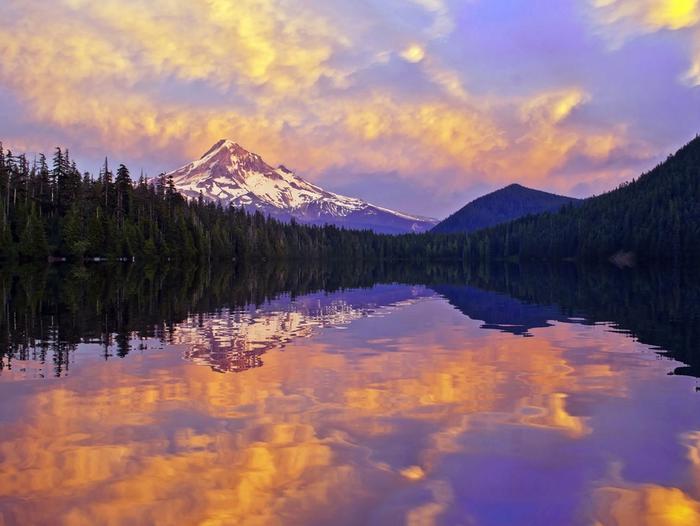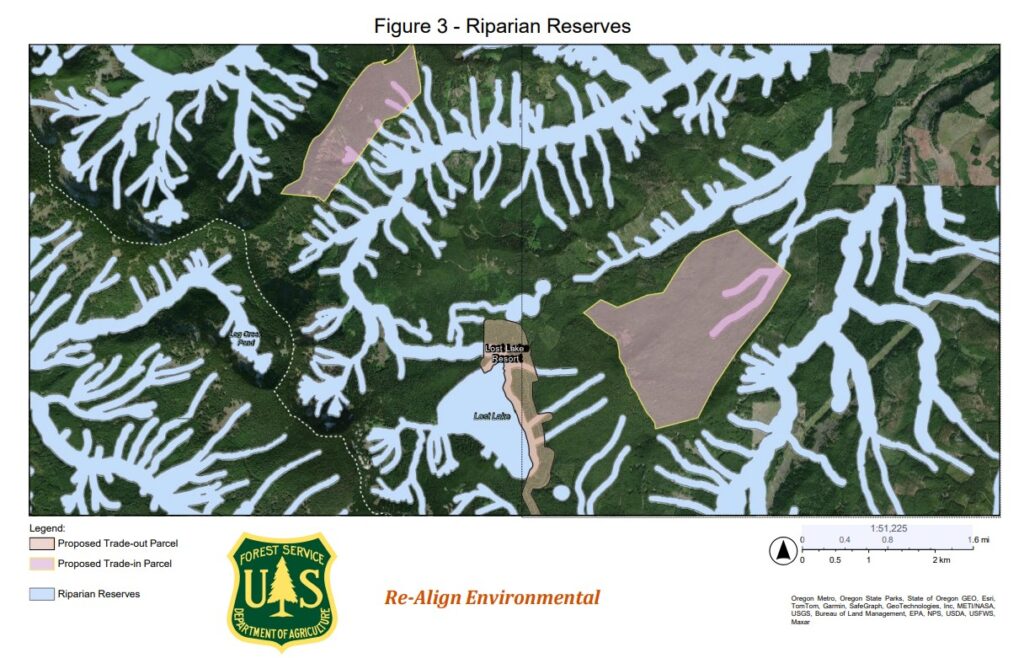Lost Lake LSR Swap

The comment period is closed. View the submitted comments in the public comment reading room.

The Mt Hood National Forest is proposing a Late-Successional Reserve (LSR) Swap in the Lost Lake Area. LSR is a land use designation under the Northwest Forest Plan. An LSR is an area of forest designated to protect and enhance the conditions of late-successional and old-growth forest ecosystems and their associated species.
The Proposal
The Forest Service is proposing to remove the LSR designation from 299 acres (referred to as the “trade-out parcel”) that stretch from north of the lake, south along the east side where the resort and campground is located, and down to the Sentinel Spur dispersed camping area. In exchange, the Forest Service proposes to redesignate 1,535 acres of “Matrix” land (can be managed for timber production) to LSR. These “trade-in” parcels are located NW of the lake along Waucoma Ridge, and NE of the lake, on Lost Lake Butte.
The Mt Hood Forest Service states that this swap is needed because the current land use designations make it difficult to manage the area. Specifically:
- “The Forest is currently limited in its ability to actively manage the developed facilities,
including fire mitigation needed to protect the developed facilities, visitors, and staff.” - “With increasing public demand for recreation in this area, future planning for the Lost Lake Resort, Campground, Day Use Area, and Sentinel Spur is constrained by the LSR allocation, which limits tree cutting.”
Bark’s View
Lost Lake is anything but lost these days. This incredibly loved landmark sees well over a hundred thousand visitors per year. As you may imagine that level of visitation and recreation comes with impacts to the lake and surrounding ecosystems. Further, that many people and cars packed into a small valley becomes extremely problematic if the area is ever threatened by wildfire. There is clearly a need for a long-term solution that balances visitor safety, recreation impacts, and ecological conservation and stewardship. However, Bark has several issues over the current proposal:
- The Lost Lake Resort is privately owned and operated under a lease agreement with the Mt Hood National Forest. Private ownership has something to gain, especially by any potential expansion of resort infrastructure, so the public deserve a hard look and full transparency while developing a solution.
- There is little explanation of how the two “trade in” parcels were selected and deemed the most appropriate for LSR designation. While surveying the parcel on Lost Lake Butte, Bark staff found a forest with little to no late-seral characteristics (see photos here). There were a few old Douglas-fir and western redcedar left, but many of the larger trees had already been cut and removed in the past. Further up the butte, the forest becomes very dense will small trees and a thick understory of rhododendron. See here for LiDAR maps of the trade parcels that show canopy height.
- We are not convinced that removing the LSR designation from the resort and campground area is the only way to address recreation impacts and wildfire concerns. We would like the Forest Service to explore other legal options or explain in greater detail why an LSR swap is the only way to address the issues.
- Bark has learned through sources that this current proposal originated from conversations between the ownership of Lost Lake Resort and leadership on the Mt Hood National Forest. At no time during the development of the proposal did USFS staff reach out to the many stakeholders who represent public interests on the Forest. Instead, they put forward a proposal that lacks information, transparency, and only allows 30 days for the public to respond.
In summary, Bark believes there is a need to develop a long-term solution for the Lost Lake area. However, the solution must come from a process that is transparent and includes meaningful outreach to the public, Tribes, and relevant stakeholder groups. We encourage the Mt Hood Forest Service to withdraw the current proposal and try again through a more transparent and inclusive process.
Submit a Comment!
If you care about this area and want more input and transparency in how it is managed in the future, submit a comment here before September 19th! Start with who you are, why you care about the place (personal connection or investment), and then use the bullet points above to share why you want a more transparent and inclusive process to develop a solution for the area.
Additional History and Background
The Lake was never really lost, it has been home to Indigenous families and Tribes since time immemorial. The area surrounding the lake contained berry fields that were harvested and managed by people whose descendants are now members of The Confederated Tribes of Warm Springs and The Confederated Tribes and Bands of the Yakama Nation.

